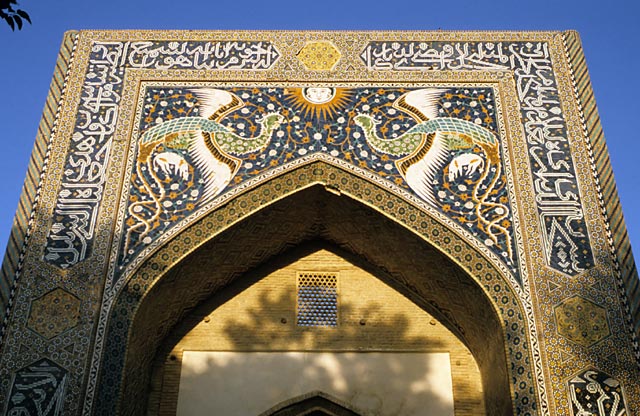 I found this Central Asia album book in my favorite used bookstore. Original publishing date: Glasnost.
I found this Central Asia album book in my favorite used bookstore. Original publishing date: Glasnost.
Magown, Robin (text) and Gippenreiter, Vadim (photos). Fabled Cities of Central Asia: Samarkand-Bukhara-Khiva. New York: Abbeville Press, 1989.
This is not the first old book I have become enchanted with, nor will it be the last. My all-time favorite self-help book is an Officer's Manual for the US Air Force from 1954 (cost: USD 1) that advises me to buck up and be a man when facing difficulties (good idea, part one; not likely, part two). The charm of old books is that their sociological assumptions are so completely out of date. Therefore, cultural assumptions are easily bypassed onto whatever lasting virtue is conveyed. Running into those older conceptions also prompts me to realize that my cherished assumptions will be quite fusty soon–maybe as early as next week.
Uzbek SSR–A veritable Paradise
 A great part of the text's tone is one of euphoric wonder. After so many decades of restricted travel, the writer breached the old Iron Curtain. He was able to work with one of the Soviet Union's premier architectural photographers. They could walk around relatively freely in villages, taking pictures and being invited to places that few had ever been able to see, much less bring back, to the Other Side. When you add that euphoria to the normal joyous complacency that seems to attach to travel writing, you get a very glossy view of life in the Uzbek SSR.
A great part of the text's tone is one of euphoric wonder. After so many decades of restricted travel, the writer breached the old Iron Curtain. He was able to work with one of the Soviet Union's premier architectural photographers. They could walk around relatively freely in villages, taking pictures and being invited to places that few had ever been able to see, much less bring back, to the Other Side. When you add that euphoria to the normal joyous complacency that seems to attach to travel writing, you get a very glossy view of life in the Uzbek SSR.
At times, however, this wonder can turn into a wilfully suspended disbelief. For instance, when discussing Samarkand's Bibi Khanum's dome, the Magown writes: “the project of rebuilding a structure of the Bibi Khanum's scale could not help but appeal to the men of the Kremlin” –which is why the dome was renovated (a-historically) to remove “the most poetic of cracks.” Is it better to fix it or not fix it? Somehow I think Magown would have rhapsodized over either. And more along this vein.
Uzbek SSR–Glorious Views
Some of the kitschy attitude in the writing also appears in the photographs as well: a sure indication that this book is about beauty and not documentary truth. Accordingly, the photos with people in them are reminiscent of National Geographic: Every costume clean and Elaborate; everyone in native dress; the picturesque aged and young women. No kommisars, young men, or children in this book. But the kitsch disappears when the photographer confronts his real subject: Islamic architecture.
The sense of space and proportion in these buildings is beautifully conveyed; the decay of past glory through both climate and neglect; the strong design sense that applies to decoration. This is of course, the book's true value, and how it does eventually, transcend time: by turning to the monuments that have transcended time for far longer.
 As for the kitsch, I see it as a swan song for Perestroika and Glasnost, when it looked like the center might hold if it received enough Western compliments–it didn't; and as a “before independence” look at the long ignored part of the Soviet periphery, one that endured further economic and political turbulence when glasnost was no more.
As for the kitsch, I see it as a swan song for Perestroika and Glasnost, when it looked like the center might hold if it received enough Western compliments–it didn't; and as a “before independence” look at the long ignored part of the Soviet periphery, one that endured further economic and political turbulence when glasnost was no more.
Photos: Horizon Book.com; Uzbekistan.org; johndarm.clara.net